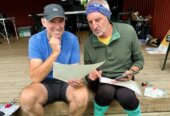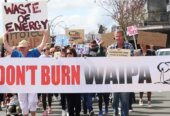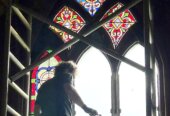Andrew Flay is not sure why his farm was selected for a visit from Australian High Commissioner Harinder Sidhu, but he made certain she had a real ‘down on the farm’ experience.
Sidhu, who was appointed two years ago, brought along suitable attire last week to Flay’s Waipā dairy farm – a pair of Skellerup Red Band gumboots.
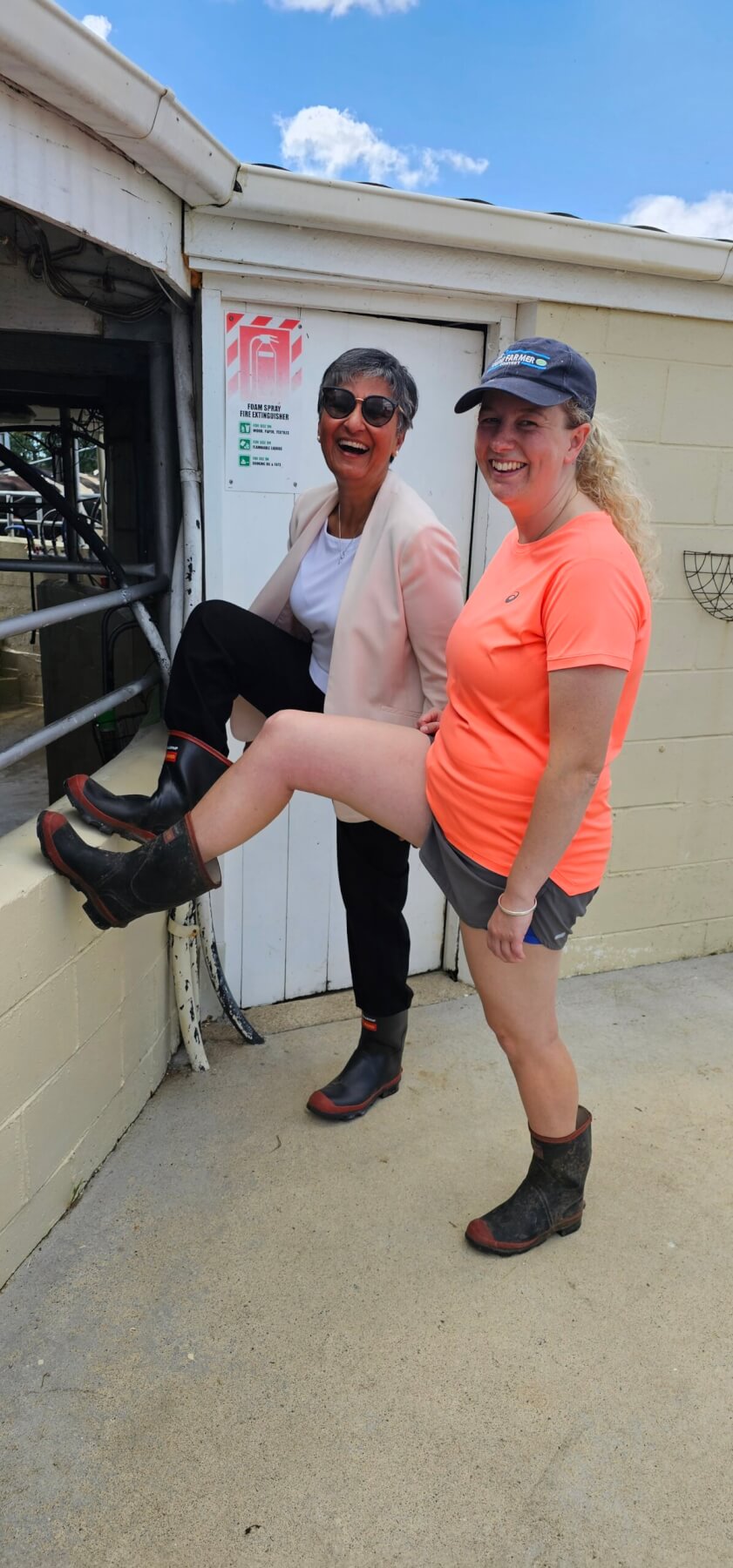
Australian High Commissioner to New Zealand Harinder Sidhu shows off her newly acquired Skellerup Red Band gumboots outside the milking shed next to dairy farmer Holly Forbes’ well-worn pair. Photo: Mary Anne Gill.
She showed her experience swatting away flies as she watched Flay’s herd of 379 cows head into afternoon milking at the Sutton Road dairy farm’s rotary cowshed, six kilometres northeast of Te Awamutu.
She arrived too late to see Flay’s star milk producer – cow number one who delivers more than 40 litres a day.
“She’s been milked and is back in the paddock. She’s an aggressive eater and an aggressive walker,” said Flay.
Sidhu was on a two-day trip to the Waikato hosted by the Waikato Chamber of Commerce. The trip to the dairy farm was her last before she flew back to Wellington vowing to come back for Fieldays later in the year and visit Maungatautari, the largest mainland fenced project in New Zealand.
She was told the mountain had a 47 kilometre pest-proof fence aimed at restoring endangered native flora, fauna and wildlife by eliminating predators like rats and possums.
“I’ll have to come back for a week next time. It’s amazing you’ve been able to achieve that.”
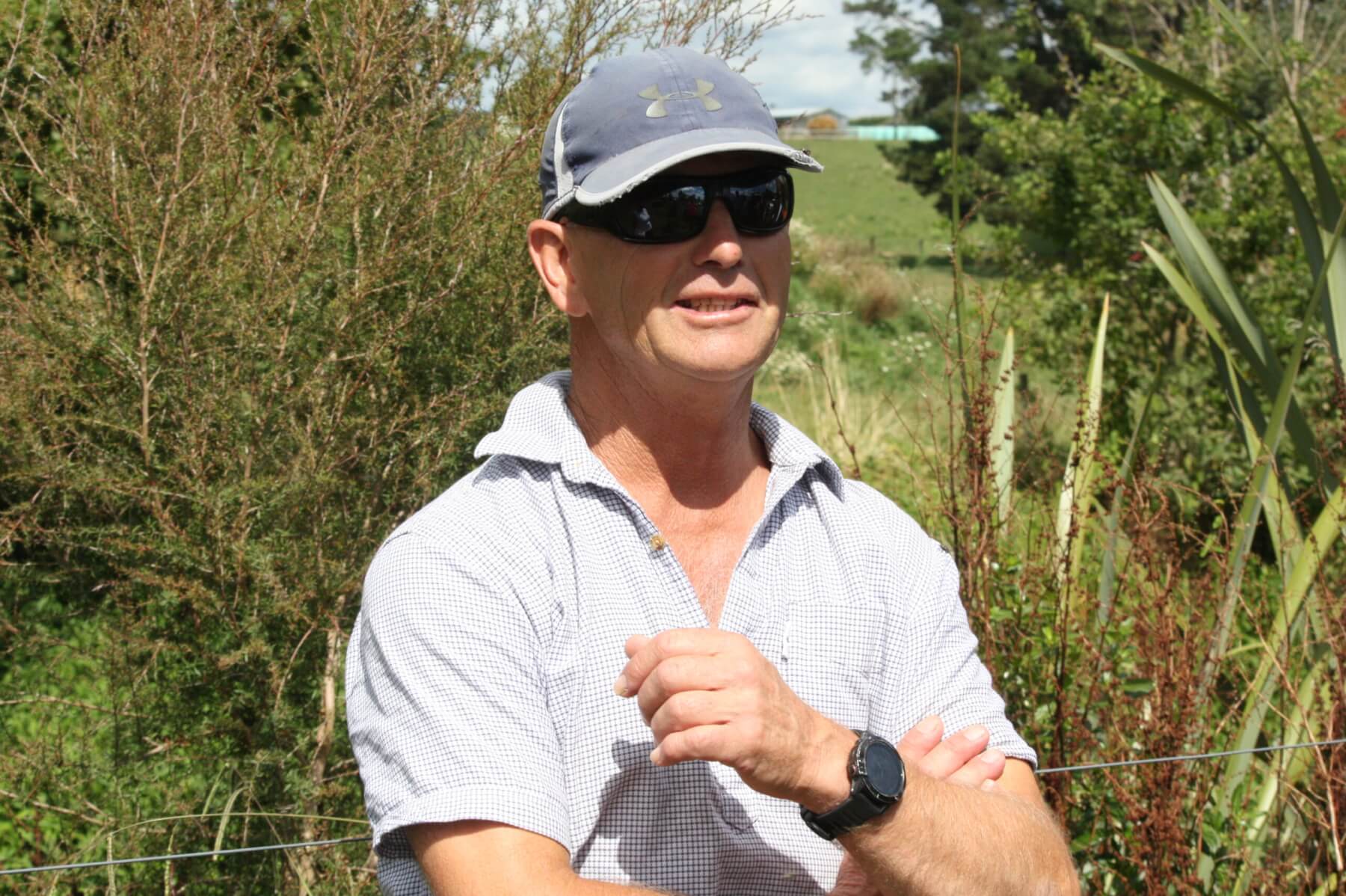
A reflective Andrew Flay at the back of his farm where the Taiea te Taiao ecological corridor project, which stretches from Maungatautari to Pirongia by planting along the Mangapiko Stream, is going through his farm.
Flay is part of the Taiea te Taiao ecological corridor project which stretches from Maungatautari to Pirongia via the Mangapiko Stream connecting two ecologically significant maunga and enabling native species to move safely between the two.
Intensive farming over the years has seen the degradation of the stream, part of which flows through the Flay farm. As part of the project, he has riparian fencing and planting alongside the stream and any tributaries on the farm with an average setback of five metres. Existing tree stands, such as the large kahikatea one he planted several years ago, are fenced off.
“There’s certainly a lot of pressure on farmers, we’re in the spotlight, in the cross head when the rivers are not right,” said Flay.
The planting along the ecological corridor helps with run off by absorbing it and keeps the stock away from the stream and provides shade.
Flay has been on the farm since 1983. He originally supplied the Waikato Co-op Dairy Company and latterly Fonterra.
He produces about 170,000kg of milksolids a season. At the end of last month, he was about four per cent behind after eight months of the season but 15 days into February, he was 16 per cent ahead for the month to date.
Sixty percent of the herd is still milking twice daily and 90 per cent of the cows are in calf.
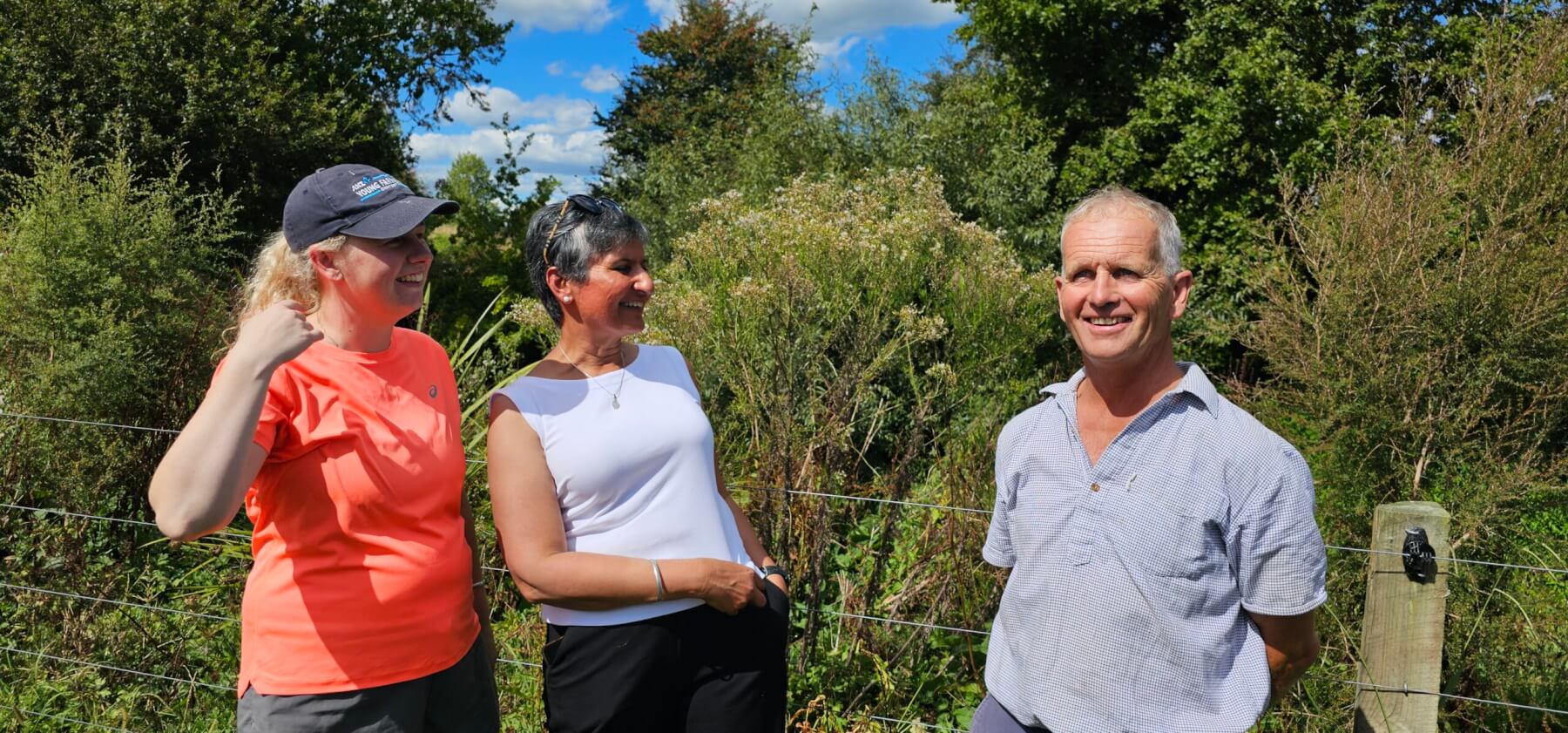
Australian High Commissioner to New Zealand Harinder Sidhu, centre, with dairy farmers Holly Forbes, left, and her father Andrew Flay, right, joke about the heat down on the farm.
Flay and his daughter Holly Forbes, who works on the farm with her husband Jesse, had just started feeding out maize for the first time in the season and by this week they expect to move onto the silage grown on the farm.
Depending on cow condition and the climate, they expect to still be milking by the end of May.
Forbes, who attended Te Awamutu College and did an undergraduate degree in science at Massey and then her masters while working at Dairy NZ, returned to the farm this season with Jess and their daughter.
“We’re still learning but Dad’s pretty open to learning too,” she said.
Like the trial underway in one of his paddocks with Barenbrug, formerly Agriseed.
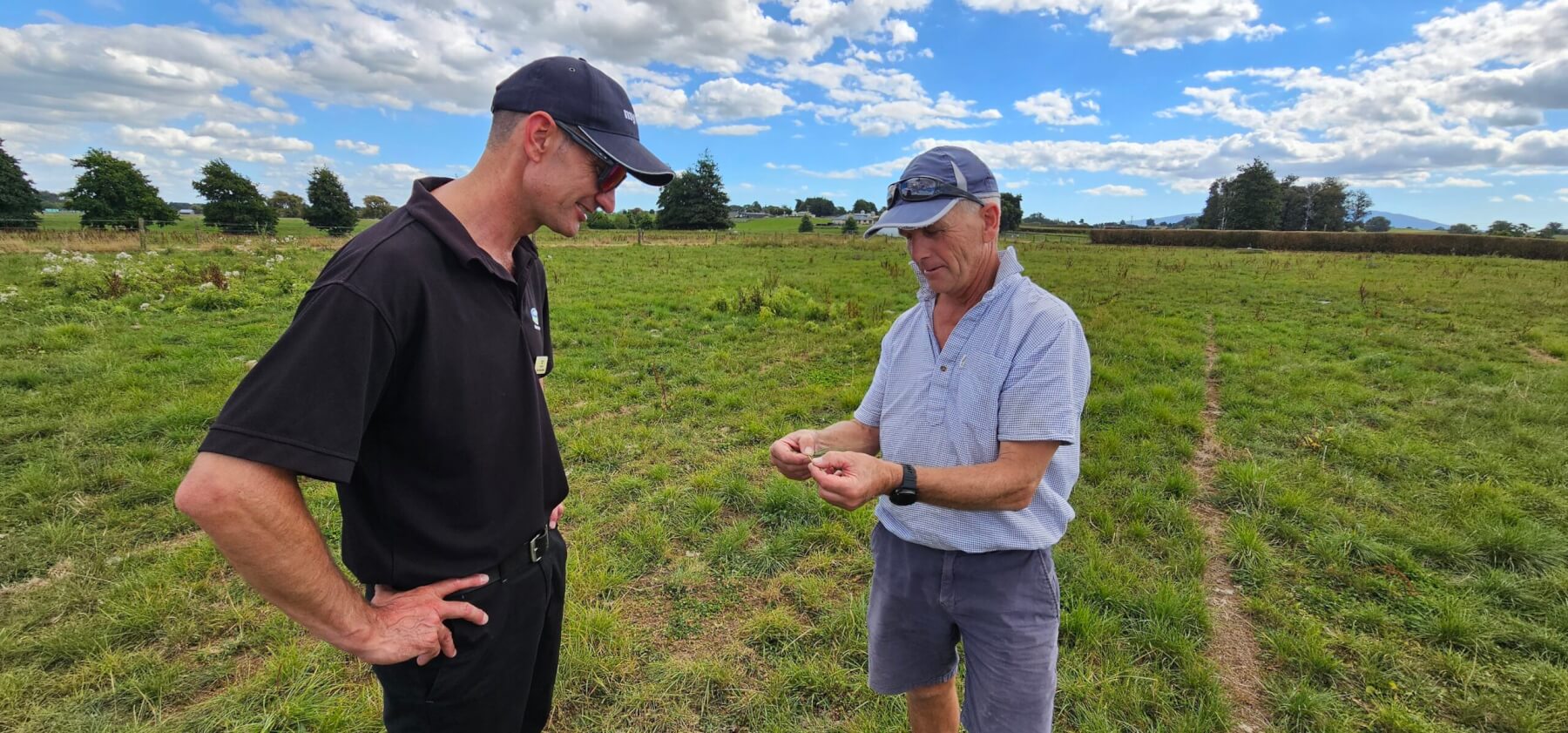
Te Awamutu dairy farmer Andrew Flay shows Fonterra area manager Nick Andree-Wiltens a sample of the grass being trialled in his paddock.
The seed company is running a trial in one of Flay’s paddocks, planting 40 per cent of it in a mixture of tetraploid (dark green) and diploid (light green) rye grass – 60-70 varied species planted out in squares.
Flay is not sure what the mix is but has noticed the tetraploids are darker green and growing at various times of the year than he is used to seeing.
“I just treat it like a paddock. They were interested in doing the trial so if I allowed them to do the trial here, they would pay for (sewing) the rest of the paddock.”
Barenbrug regularly return to see how the grasses do over the seasons. Next year the company will do a hybrid rye grass trial in another paddock.
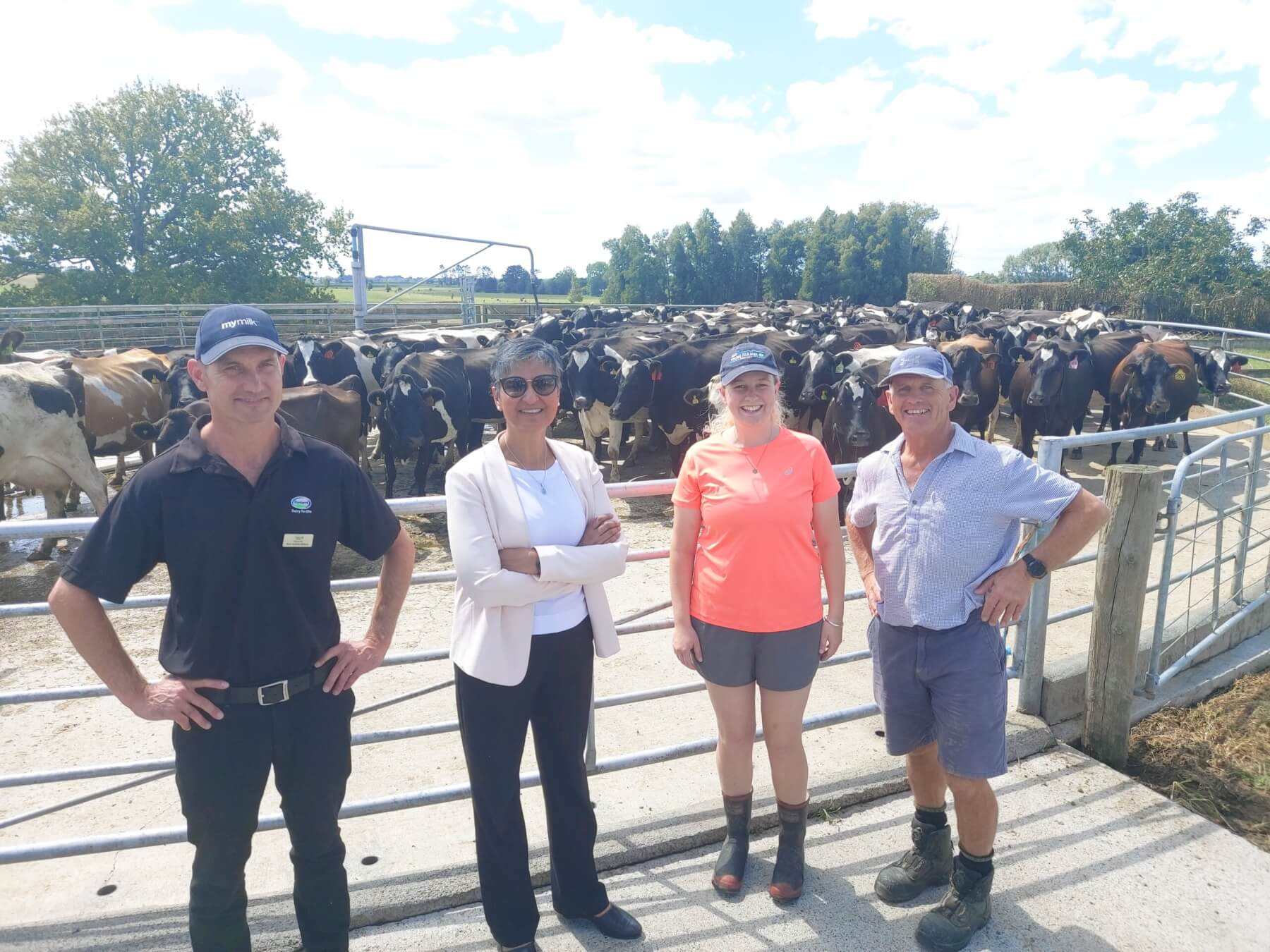
Down on the farm: from left, Fonterra area manager Nick Andree-Wiltens, Australian High Commissioner to New Zealand Harinder Sidhu, dairy farmers Holly Forbes and her father Andrew Flay.
In addition to her trip to Waipā to see a working dairy farm, Sidhu visited Waikato University, Visy in Rukuhia, Tatua Co-op, Hamilton City Council, Gallagher Group, Tira (formerly NDA) and Innovation Park.
Chamber chair Senga Allen said the high commissioner’s visit was a precursor to closer connections between Waikato businesses and opportunities in Australia.
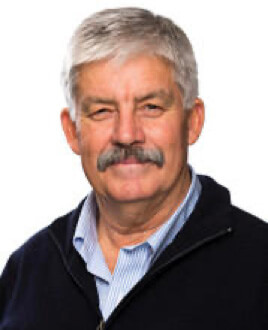
Don Good
The purpose of the visit was to continue to develop connections between the countries’ business people, give Australia a better understanding of what goes on businesswise in the Waikato and look to facilitate introductions at events such as Fieldays.
Chamber chief executive Don Good said much of what happens in the Waikato flies under the radar.
“Fieldays is just around the corner in June so we are getting a head start on facilitating connections that could lead to greater economic development.”
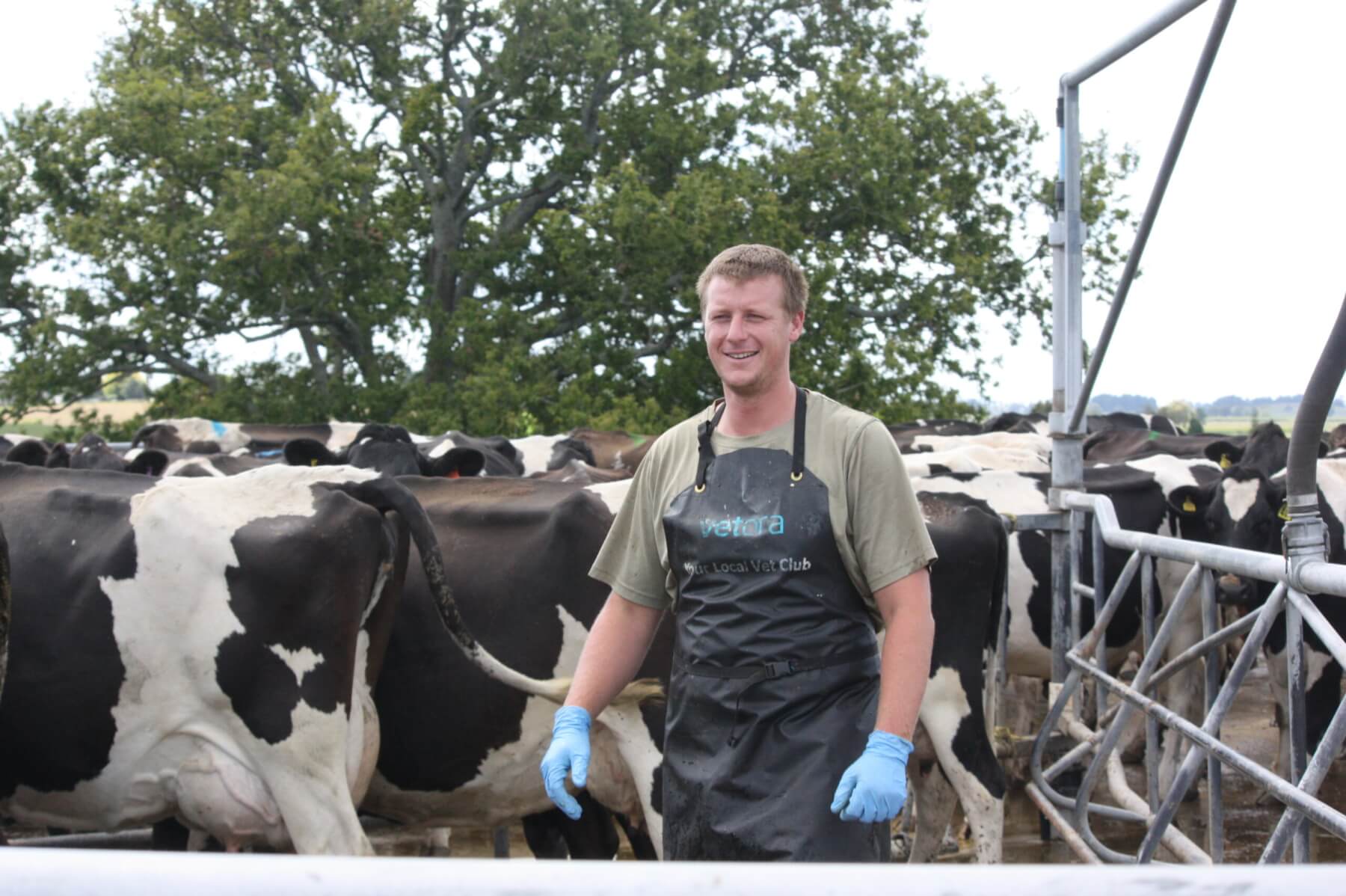
Jesse Forbes milks the cows at his father-in-law Andrew Flay’s Te Awamutu dairy farm.

Fraser Annan cleans up after milking with Pirongia in the background.
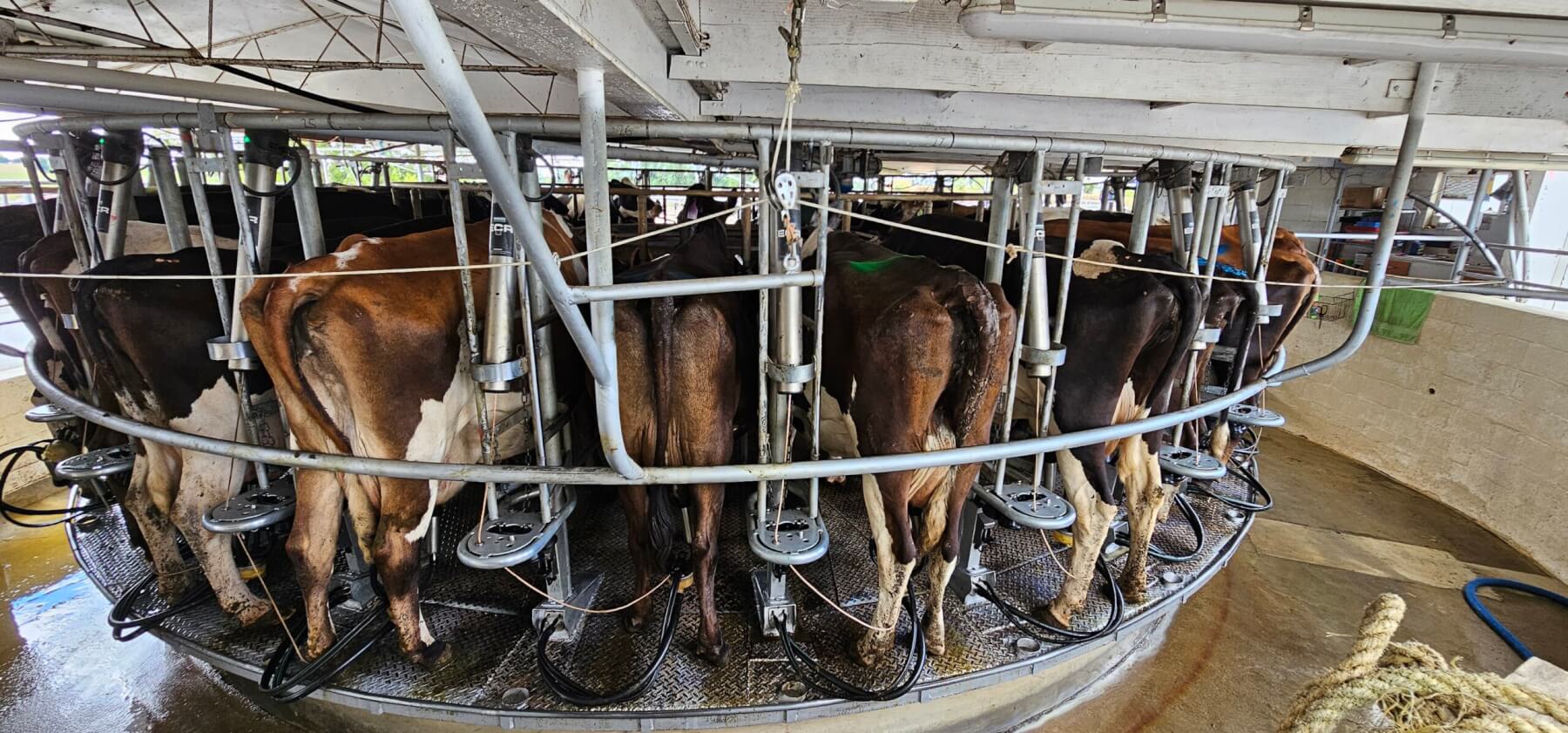
Cows stand in the Flay dairy farm’s 28 bay rotary milking shed.
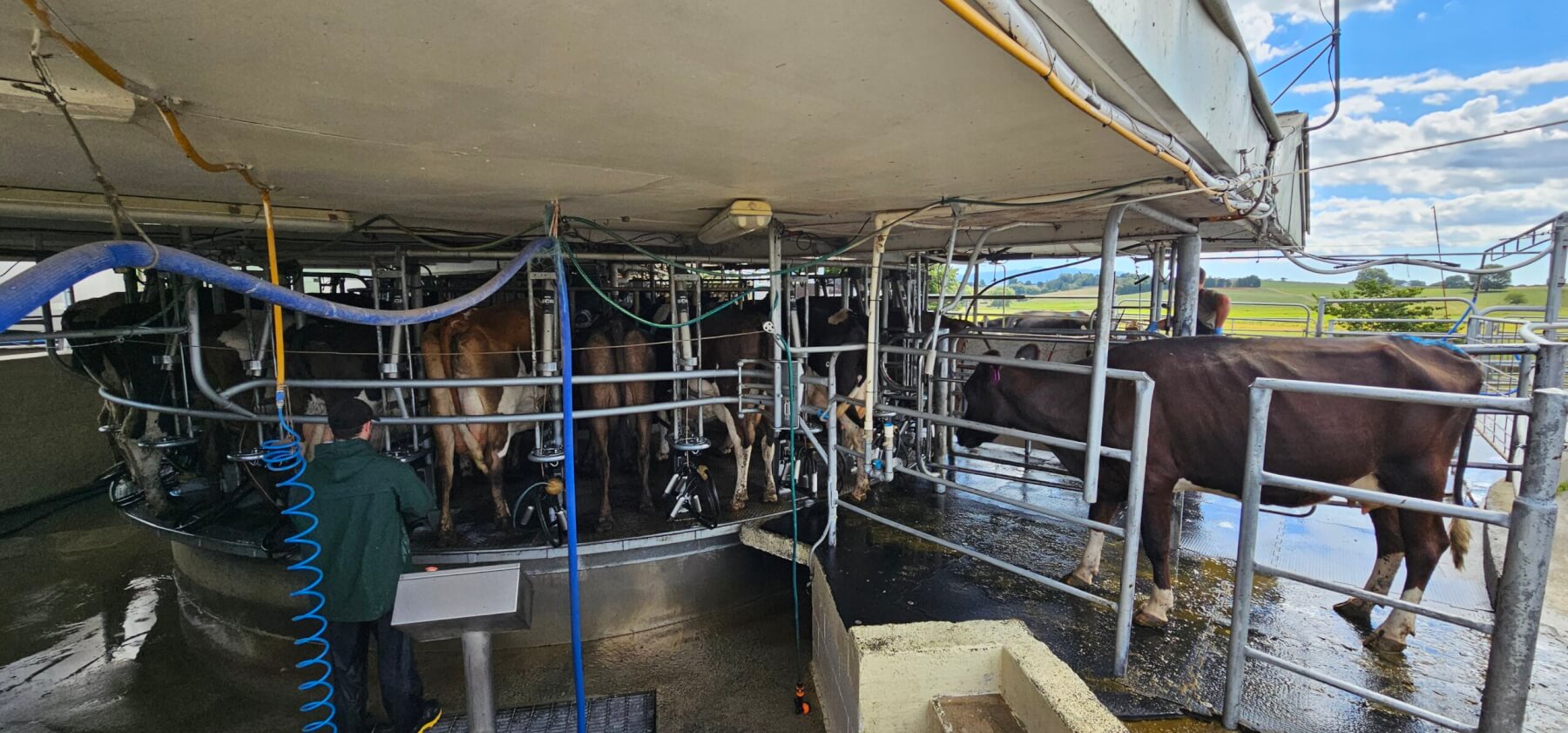
A cow prepares to enter the Flay dairy farm’s 28 bay rotary milking shed.
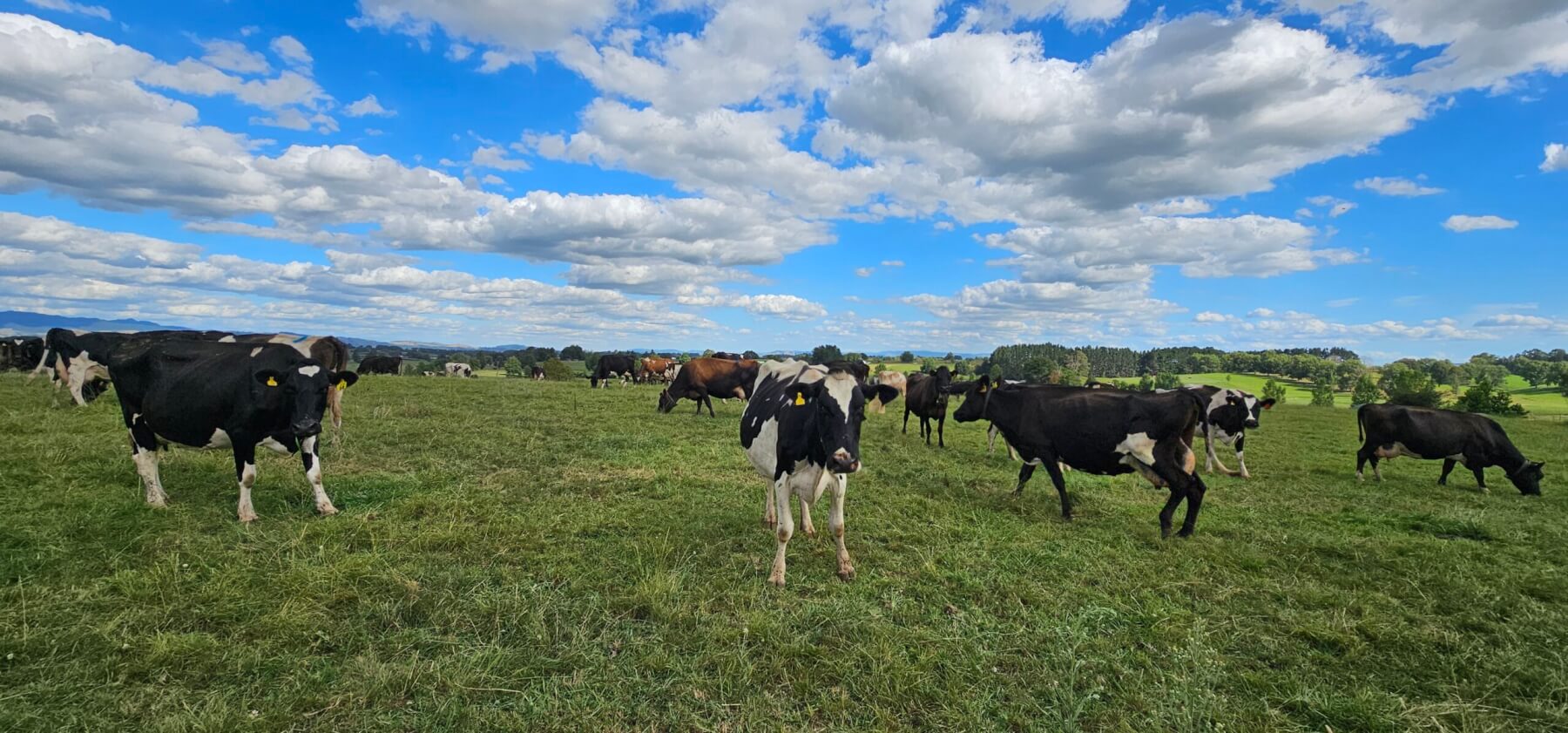
Andrew Flay’s dairy farm in Sutton Road, Te Awamutu overlooks Maungatautari to the east and Pirongia to the west.
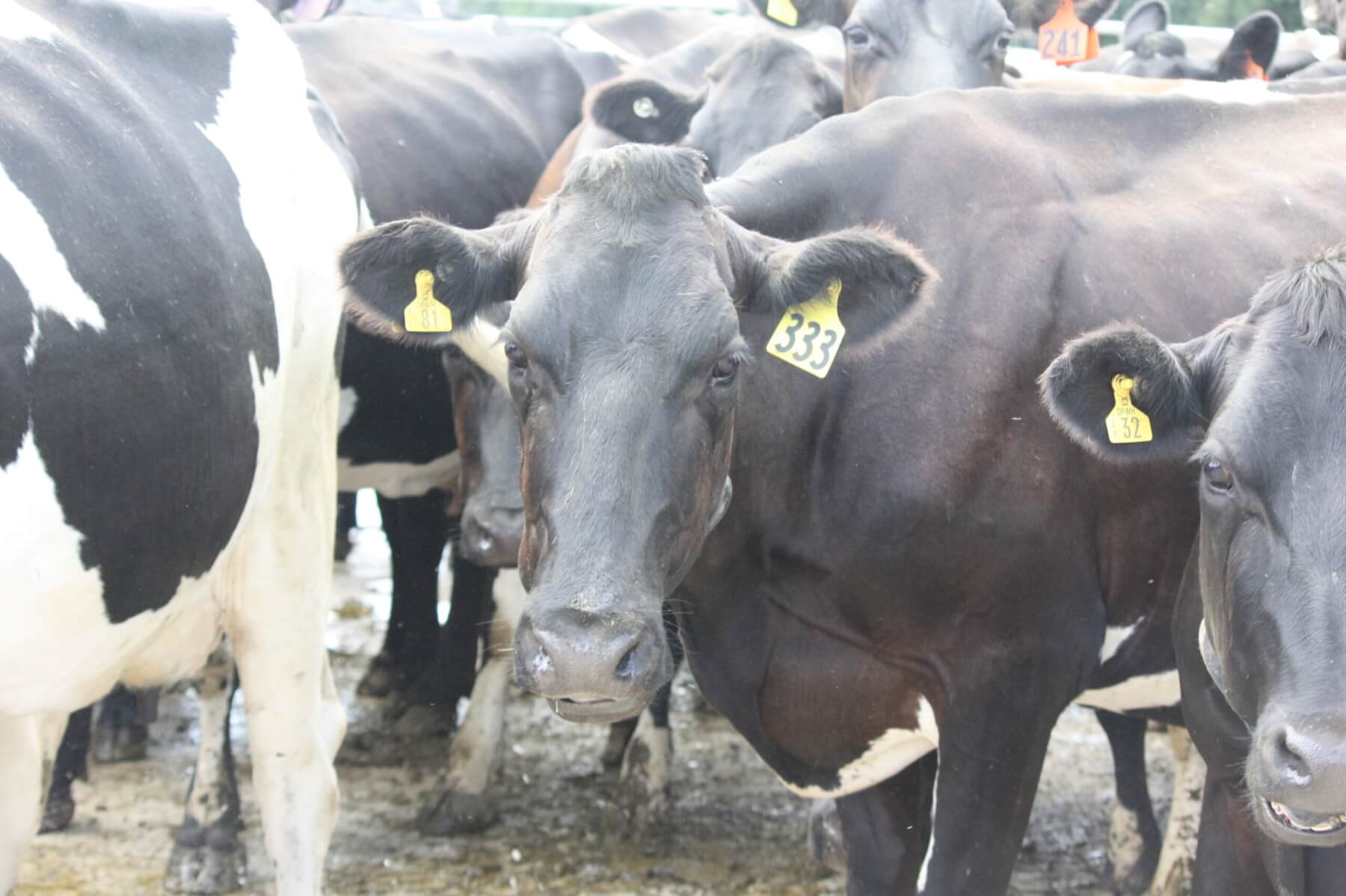
Waiting patiently: Dairy cows ready for milking at the Flat dairy farm in Te Awamutu.
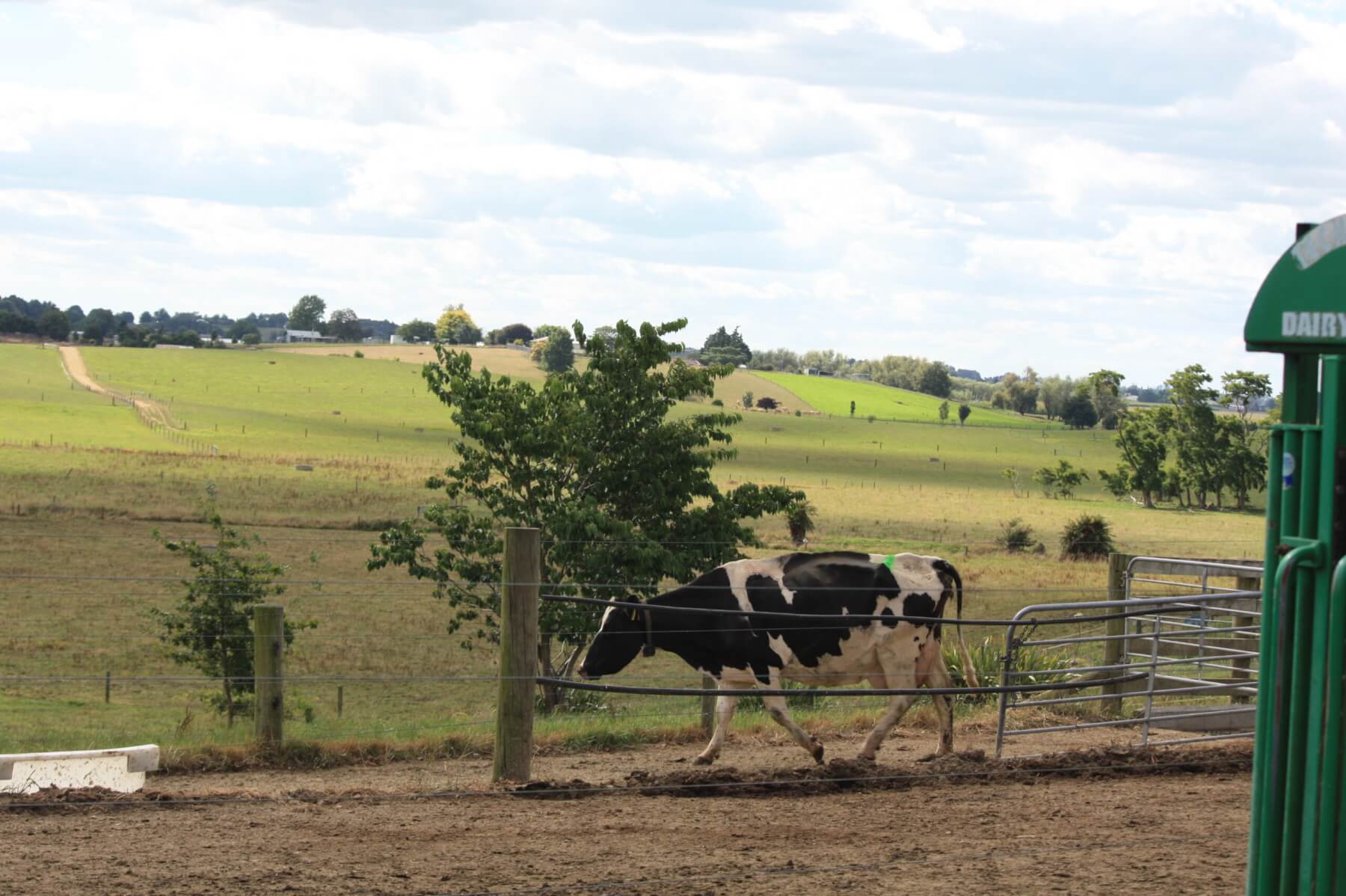
Job done: A cow leaves for the paddocks after milking at the Flay dairy farm near Te Awamutu.
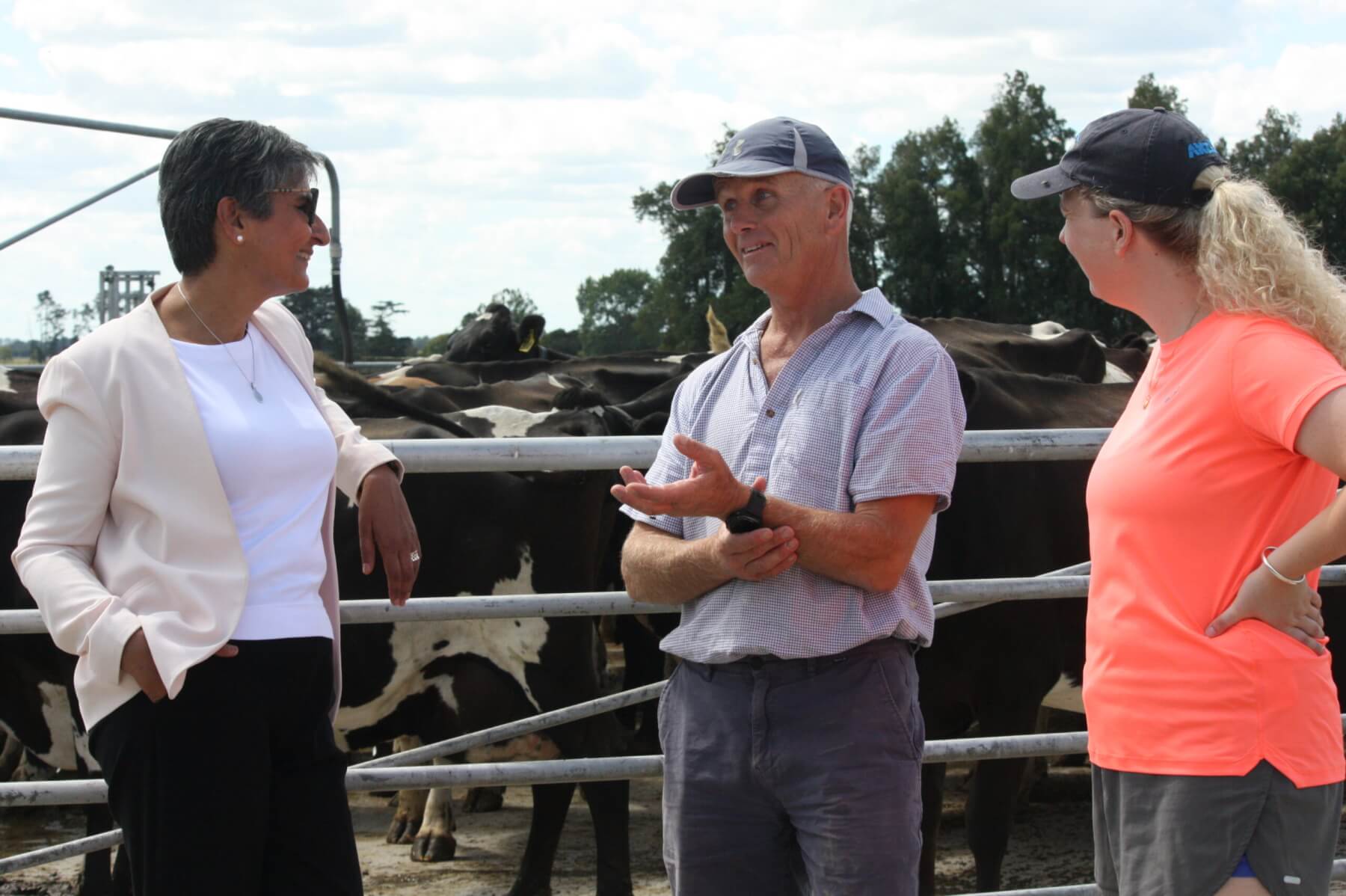
Australian High Commissioner to New Zealand Harinder Sidhu, left, with dairy farmers Andrew Flay and his daughter Holly Forbes.





